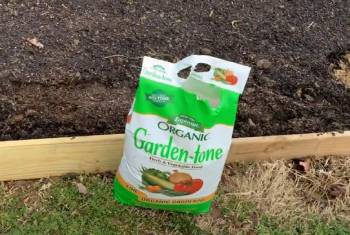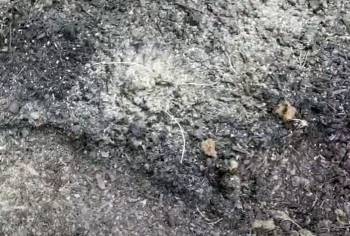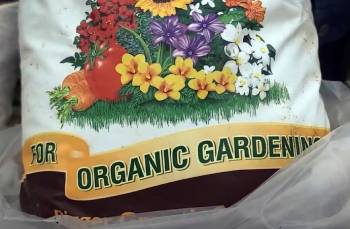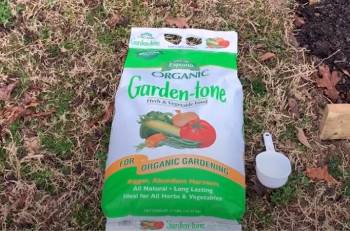If you’re serious about gardening—whether it’s flowers, vegetables, shrubs, or trees—you’ve probably heard of Espoma Organic Plant-Tone. After using it for a full growing season, I can confidently say this product has become a staple in my gardening routine.

If you’re looking for an organic, all-purpose fertilizer that truly lives up to its reputation, Plant-Tone is the one you need to buy. It’s easy to use, environmentally safe, and delivers incredible results. Whether you’re a seasoned gardener or just starting out, this is one product that will elevate your plants to the next level.
My Experience With Espoma Plant-Tone
When I first heard about Plant-Tone, I was skeptical. I’ve tried countless fertilizers over the years, and while some worked, many left me disappointed—either they were too harsh, short-lived, or not truly organic. But after seeing glowing reviews and hearing other gardeners rave about it, I decided to give it a shot.
The first thing I noticed was the packaging. It’s straightforward and easy to handle, which is always a plus. The granules are ready to use—no mixing, no measuring, no fuss. I applied it around my flower beds, vegetable garden, and even a few shrubs in early spring. By mid-season, the results were undeniable.
My roses bloomed like never before, my tomatoes were plump and flavorful, and even my hydrangeas—which can be fussy—looked healthier than ever. What impressed me most was how consistent the results were across different plants. It’s rare to find a single product that works equally well on flowers, vegetables, and shrubs, but Plant-Tone delivered.
One thing I’ll admit is that the smell was a bit of a shock at first. As with most organic fertilizers, it’s not exactly pleasant. But let’s be honest—if it smells bad, it’s probably doing something good for your plants. The smell fades quickly after application, so it’s not something that bothered me long-term.

What Makes Espoma Plant-Tone Special?
So, what’s the secret behind Plant-Tone’s success? Here’s what I’ve learned:
It’s 100% Organic:
One of the main reasons I chose Plant-Tone is because it’s organic. There are no synthetic chemicals or toxic ingredients, which means it’s safe for the environment, pets, and kids. Plus, it’s approved for organic gardening, so you can feel good about using it in your garden.
In today’s world, where sustainability is key, using organic products like Plant-Tone is a step in the right direction. Not only does it nourish your plants, but it also enriches the soil, making it healthier over time.
Slow-Release Nutrients:
Unlike chemical fertilizers that give your plants a quick (and often short-lived) boost, Plant-Tone breaks down slowly. This means it provides a steady supply of nutrients over time, which is better for your plants and soil.
I noticed that my plants stayed healthy and vibrant for weeks after each application. This slow-release action also means you don’t have to worry about over-fertilizing or burning your plants—a common issue with synthetic fertilizers.
The Exclusive Bio-Tone Formula:
Espoma has enhanced Plant-Tone with their unique Bio-Tone formula, which includes beneficial microbes. These microbes help improve soil health and make nutrients more available to plants.
In my experience, this made a noticeable difference in the overall vigor of my garden. My plants grew stronger, had more blooms, and were more resistant to pests and diseases. It’s like giving your plants a multivitamin that keeps them thriving all season long.

Versatility:
Plant-Tone is truly an all-purpose fertilizer. You can use it on annuals, perennials, vegetables, trees, shrubs, and even roses. I’ve tried it on almost everything in my garden, and it worked beautifully every time.
This versatility makes it a great choice for gardeners who don’t want to clutter their shed with multiple fertilizers for different plants. With Plant-Tone, you get one product that does it all.
Pros Of Espoma Plant-Tone Reviews
After months of using Plant-Tone, I’ve come to appreciate several standout qualities that make it one of the best organic fertilizers on the market. Here’s a closer look at the pros:
Easy To Use:
One of the biggest advantages of Plant-Tone is how simple it is to apply. The granules are ready to go straight out of the bag. There’s no need for complicated mixing, measuring, or diluting. You simply spread it around the base of your plants and water it in. For someone like me who juggles multiple gardening tasks, this convenience is a huge time-saver.
Environmentally Friendly:
Plant-Tone is 100% organic, meaning it’s safe for the environment. It doesn’t leach harmful chemicals into the soil or water supply, and it won’t harm beneficial insects or pollinators like bees and butterflies. For gardeners who prioritize sustainability, this is a big win.
Long-Lasting Results:
Unlike synthetic fertilizers that provide a quick nutrient boost but fizzle out quickly, Plant-Tone’s slow-release formula ensures your plants are fed over time. I’ve noticed that after each application, my plants stay healthy and vibrant for weeks without needing constant reapplication. This also makes it more economical in the long run.

Gentle On Plants:
One of the things I love most about Plant-Tone is that it’s gentle. You don’t have to worry about over-fertilizing or burning your plants, which is a common issue with chemical fertilizers. Even if you accidentally apply a little more than recommended, it won’t harm your plants.
Versatile:
Plant-Tone is truly an all-purpose fertilizer. I’ve used it on everything from flowers (both annuals and perennials) to vegetables, shrubs, trees, and even roses. It performs equally well across all kinds of plants, making it a one-stop solution for most gardening needs.
Improves Soil Health:
The inclusion of Espoma’s exclusive Bio-Tone microbes is a game-changer. These beneficial microbes enhance soil structure, improve nutrient availability, and promote root development. Over time, this leads to healthier, more productive plants and richer, more fertile soil.
Pet And Kid-Safe:
Because it’s organic and free from harmful chemicals, Plant-Tone is safe to use in gardens where pets and children play. This peace of mind is invaluable for families.
Cons Of Espoma Plant-Tone Reviews
While I’m a big fan of Plant-Tone, it’s not without its drawbacks. Here are a few cons to consider:
The Smell:
Let’s address the elephant in the room—Plant-Tone doesn’t smell great. It has that distinct organic fertilizer odor, which can be off-putting if you’re not used to it. However, the smell fades quickly after application, and for me, the incredible results far outweigh this minor inconvenience. If you’re particularly sensitive to smells, wearing gloves and applying it on a breezy day can help.
Not Instant:
Plant-Tone’s slow-release nature is both a pro and a con. While it ensures long-lasting feeding, it also means you won’t see immediate results. If you’re looking for a quick fix or instant growth, you might be disappointed at first. However, the gradual and sustained improvement in plant health more than makes up for the wait.
Price:
Compared to some synthetic fertilizers, Plant-Tone is slightly more expensive. However, considering its organic composition, long-lasting effects, and versatility, I believe it offers excellent value for money. Plus, it reduces the need for additional soil amendments, which can save you money in the long run.
Requires Regular Application for Certain Plants: While trees and shrubs only need to be fertilized in spring and fall, flowers and vegetables benefit from monthly applications during the growing season. This isn’t necessarily a downside, but it does require a bit of planning and consistency to get the most out of the product.
Packaging Size:
Plant-Tone is often sold in smaller bags (like 4 lbs), which may not be ideal for larger gardens or those with extensive landscaping. If you have a big space to cover, you might find yourself going through multiple bags fairly quickly. However, larger sizes are sometimes available, so it’s worth checking with your local supplier.
Not Ideal For Acid-Loving Plants:
While Plant-Tone works wonders on most plants, it’s not tailored for acid-loving varieties like azaleas, blueberries, or rhododendrons. For these, Espoma’s Holly-Tone is a better option.
How To Get The Most Out Of Espoma Plant-Tone
To maximize the benefits of Plant-Tone, here are a few tips I’ve picked up:
- Apply in Spring and Fall: For trees and shrubs, the best time to apply Plant-Tone is in early spring and again in the fall. This ensures your plants have the nutrients they need during critical growth periods.
- Use Monthly for Flowers and Vegetables: For annuals, perennials, roses, and vegetables, I recommend applying Plant-Tone once a month throughout the growing season. Just sprinkle it around the base of your plants and water thoroughly.
- Don’t Overdo It: While Plant-Tone is gentle and won’t burn your plants, there’s no need to go overboard. Follow the recommended application rates on the packaging for the best results.
- Pair with Good Gardening Practices: Fertilizer is just one piece of the puzzle. Make sure your plants are getting enough water, sunlight, and proper care. Healthy plants are better able to absorb nutrients and thrive.
Espoma Plant-Tone Vs. Other Brands
So how does Plant-Tone compare to other fertilizers? Here’s my take:
Plant-Tone Vs. Miracle-Gro
Miracle-Gro is a household name, but it’s a synthetic fertilizer. While it works quickly, the results are often short-lived, and it doesn’t improve soil health over time. Plant-Tone, on the other hand, is organic and enriches the soil with beneficial microbes. If you’re looking for a sustainable, long-term solution, Plant-Tone is the better choice.
Plant-Tone Vs. Dr. Earth
Dr. Earth is another popular organic fertilizer, and it’s a solid option. However, I find Plant-Tone to be more versatile. Dr. Earth products are often tailored to specific plants, whereas Plant-Tone works on almost everything. Plus, the Bio-Tone formula gives Plant-Tone an edge in terms of soil health.
Plant-Tone Vs. Holly-Tone
Both are made by Espoma, but Holly-Tone is specifically designed for acid-loving plants like azaleas, rhododendrons, and blueberries. If you’re growing these types of plants, Holly-Tone is the way to go. For everything else, stick with Plant-Tone.
Frequently Asked Questions (FAQ)
For flowers and vegetables, use it monthly during the growing season. For trees and shrubs, apply in early spring and fall.
Plant-Tone is an all-purpose fertilizer, so you can use it on flowers, vegetables, trees, shrubs, and even roses.
Yes! Espoma Plant-Tone is 100% organic and approved for organic gardening.
Plant-Tone is an all-purpose fertilizer, while Holly-Tone is specifically formulated for acid-loving plants like azaleas and blueberries.
Absolutely. It’s versatile, organic, and delivers long-lasting results.
While there are many great options, Espoma Plant-Tone is one of the best due to its versatility and Bio-Tone formula.
No, Plant-Tone is gentle and won’t burn your plants when used as directed.
Synthetic fertilizers like 10-10-10 should be used sparingly, as they can burn plants if over-applied. Organic options like Plant-Tone are a safer alternative.
It depends on the type of hydrangea. For acid-loving varieties, use Holly-Tone. For others, Plant-Tone works great.
Conclusion
If you’re looking for a reliable, organic fertilizer that works on almost everything, Espoma Plant-Tone is the way to go. It’s easy to use, environmentally friendly, and delivers consistent, long-lasting results. After using it in my own garden, I can confidently say it’s one of the best investments I’ve made as a gardener. Give it a try—you won’t be disappointed!

